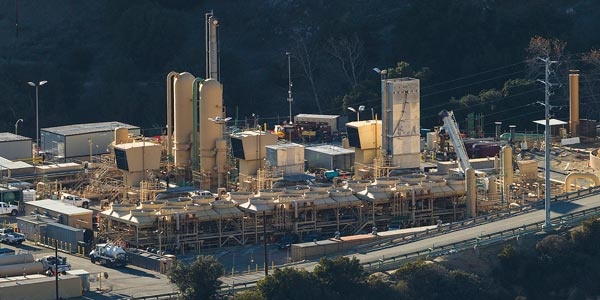By Hudson Sangree
The California Public Utilities Commission launched an examination Thursday of the state’s natural gas infrastructure and the rules governing it for the first time in 16 years, citing accidents and declining demand as threats to the system’s safety and reliability.
“California’s energy system is undergoing a period of profound change,” Commissioner Liane Randolph said. “We have committed to the goals of 100% clean energy, doubling of energy efficiency, widespread transportation electrification and a carbon neutral economy by 2045. Given these adopted objectives and policies we should anticipate and plan for the long-term changes in California’s gas distribution system as well.”
The dozen companies named as respondents by the CPUC include Pacific Gas and Electric, San Diego Gas & Electric and Southern California Gas.
“Since the commission’s last decision in [January 2004], several events, such as greenhouse gas legislation, operational issues and constraints, and gas pipeline and storage safety-related incidents, require the commission to re-evaluate the policies, processes and rules that govern gas utilities,” the commission said in its order instituting rulemaking (OIR).
It noted that PG&E was found responsible for the explosion of a 30-inch gas pipeline in 2010 that killed eight people in San Bruno, south of San Francisco. Afterward, the commission adopted a safety plan requiring operators to outline how they would replace or pressure test all intrastate gas pipelines that hadn’t been tested recently at a cost of more than $2.3 billion.
Then in October 2015, SoCalGas identified a leak at its Aliso Canyon natural gas storage facility, which spilled 120,000 metric tons of methane before it was capped nearly four months later. Gov. Jerry Brown ordered a halt to gas injections at Aliso Canyon.
State regulators, including the CPUC, allowed limited injections to resume at Aliso Canyon in July 2017. The continuing limitations have constrained gas supply in Southern California, leading to higher wholesale electricity prices and reliability concerns. (See CPUC OKs Temporary Increase in Aliso Canyon Injections.)
Problems with interstate pipelines have also impacted supply. About 30% of the state’s electric supply comes from gas-fired generators.
Meanwhile, the state has enacted stringent GHG emission laws and required decarbonization of the grid by midcentury. Cities, including Los Angeles and San Francisco, have introduced rules and incentives to eliminate gas heating and appliances from certain classes of buildings. (See West Coast Pushes for Building Electrification.)
Falling Demand, Rising Costs
The demand for natural gas is expected to decline significantly over the next 25 years, leaving those still dependent on gas to pay the costs, the commission said in its OIR.
“Ratepayers who remain on the system the longest will likely be customers who may not be able to afford to switch from gas to electric home heating and cooling systems; yet, these customers would be required to cover the revenue requirement of the remaining pipeline system at higher rates,” it said.
In an October 2019 report titled “Natural Gas Distribution in California’s Low-Carbon Future,” the California Energy Commission discussed the “feedback effect” of building electrification and declining gas use.
“If demand for natural gas in California falls dramatically because of some combination of policy and economically driven electrification, the fixed costs to maintain and operate the gas system will be spread over a smaller number of gas sales and, ultimately, will increase costs for remaining gas customers,” the commission said.
“This outcome raises the possibility of a feedback effect where rising gas rates caused by electrification spur additional electrification,” it said. “Such a feedback effect would threaten the financial viability of the gas system, as well as raise substantial equity concerns over the costs that remaining gas system customers would face.”
The CPUC said the goal of its OIR is to ensure reliable gas service to customers at just and reasonable rates going forward.
The “proceeding will examine how industry-related events that have occurred since the last OIR require the commission to change the rules, processes and regulations governing gas utilities, including, but not limited to, reliability standards, long-term contracting, regulatory accounting, reporting and tariff changes for operational flow orders,” the commission said.
The OIR outlines a three-phased approach, starting immediately.
The first phase will examine reliability standards for the gas transmission system to determine if design changes are needed to account for a changing climate and the service capacity of current and future gas system infrastructure.
The second will consider proposals for mitigating the negative effects that “operational issues with gas transmission systems have on wholesale and local gas prices, and gas system and electric grid reliability.”
Phase three will weigh regulatory solutions and strategies the commission should implement “to ensure that, as the demand for natural gas declines, gas utilities maintain safe and reliable gas systems at just and reasonable rates, and with minimal or no stranded costs,” the CPUC said.



